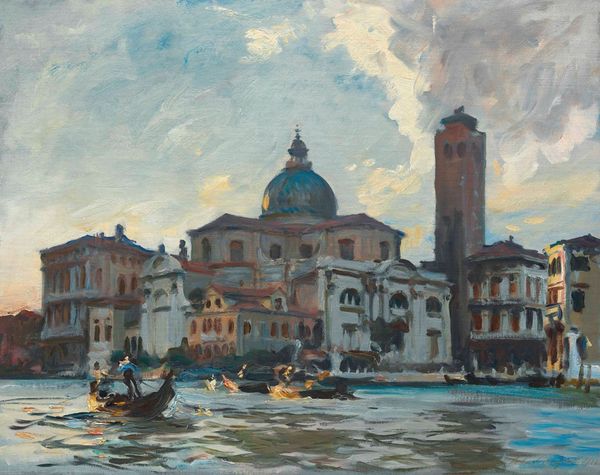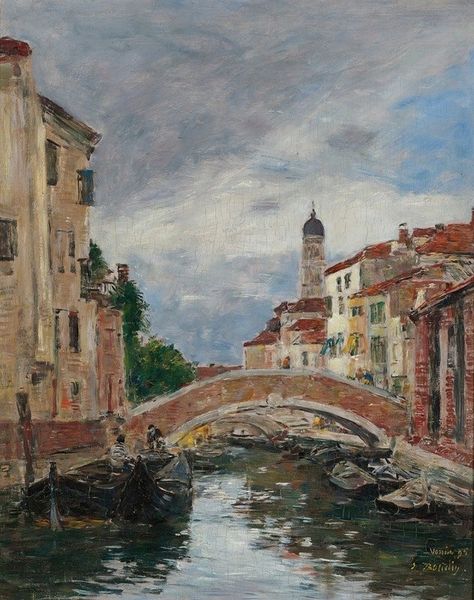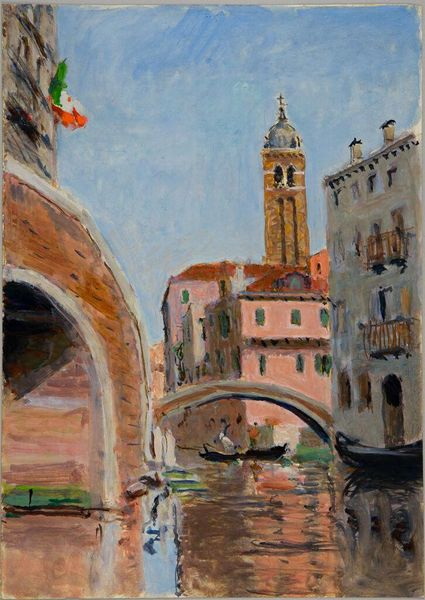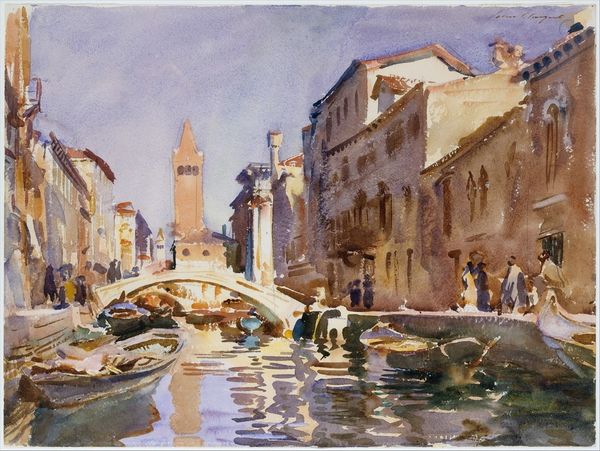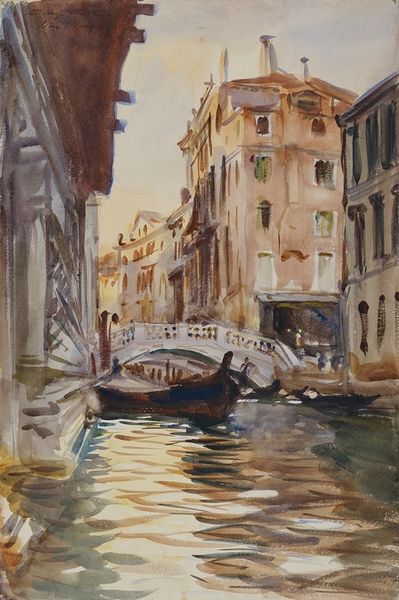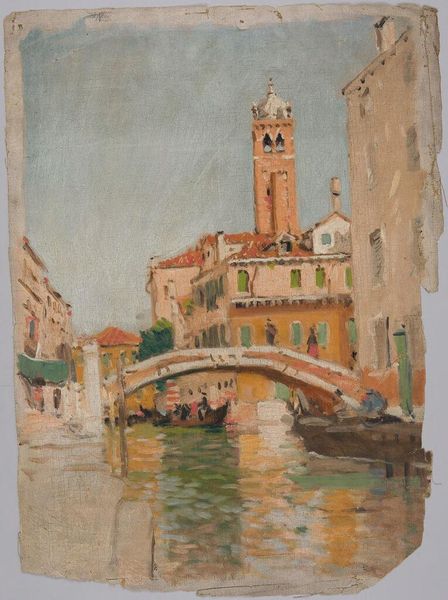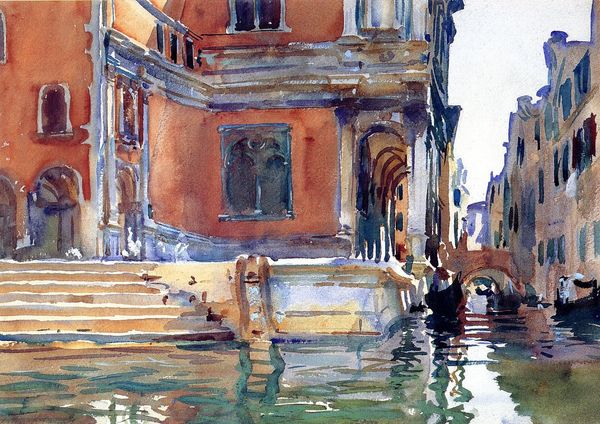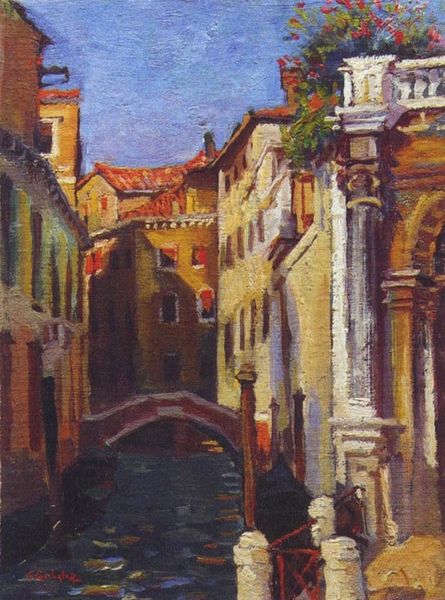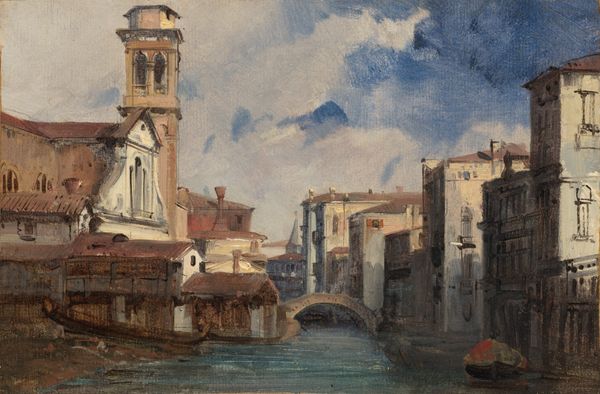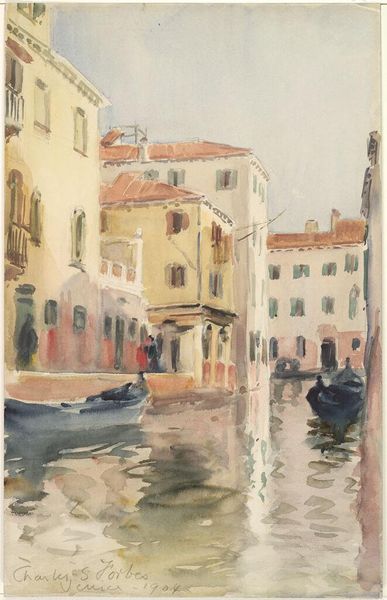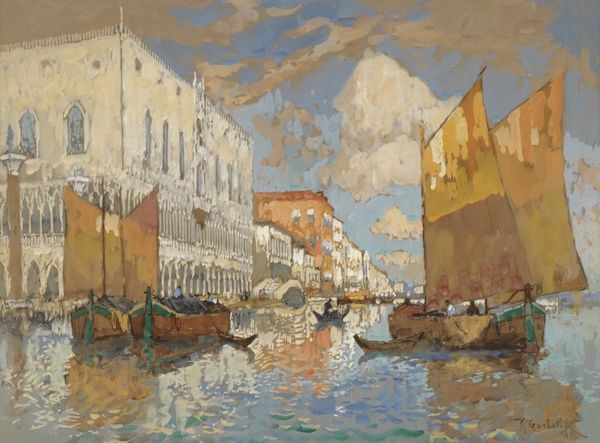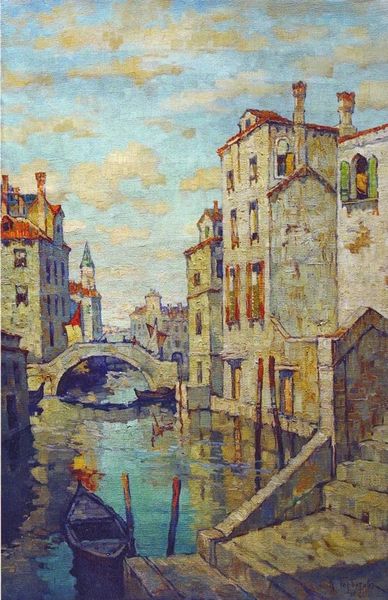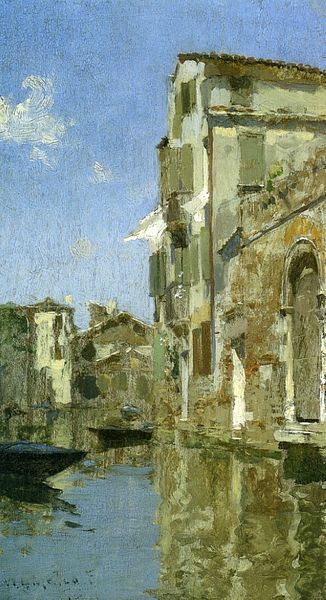
painting, oil-paint
#
venetian-painting
#
painting
#
impressionism
#
impressionist painting style
#
oil-paint
#
landscape
#
impressionist landscape
#
oil painting
#
water
#
painting painterly
#
cityscape
#
building
Copyright: Public domain
Curator: This artwork, rendered with oil on canvas, is entitled "Vue De Venise," attributed to Maurice Bompard. The painting style indicates characteristics of impressionism. What are your first thoughts about this cityscape? Editor: Immediately, the mood is strikingly calm. The brushstrokes give a fluid feel to the water, and even the architecture seems to be breathing. There’s a gentle interplay between light and shadow here that I find captivating. Curator: Venice, a city celebrated for its waterways, becomes a focal point in art history and, arguably, a contested space politically, socially, and even environmentally, especially today with discussions around tourism and rising water levels. Bompard captures a particular view, almost sanitized of any complex realities. How do we view such romanticized imagery today? Editor: I agree; there's a level of idealization present. Consider the figures in the gondola—are they presented as workers or merely part of the picturesque view? And who is this “vue” really for? Is it meant to reinforce a certain image of Venice for an outside audience, a colonial gaze perhaps, at the expense of the lived realities of its inhabitants? Curator: Exactly, the role of the artist becomes critical here. By framing Venice in this way, Bompard potentially participates in creating and perpetuating narratives that favor certain classes. We see the beauty, sure, but whose stories are left untold? What power dynamics are reflected in that artistic decision? Editor: And this is also an example of impressionism—focusing on sensation, light, atmosphere – over say, any sort of explicit social commentary. Are we simply meant to appreciate the artist's technical skill, or do we demand that art engage with more difficult themes? Curator: It’s a call to actively decode and challenge dominant ideologies reflected in art. Asking who benefits, who is excluded—it enhances, not diminishes, the experience. Editor: I leave looking at it now with a little more than a simple aesthetic appreciation, aware of the conversations and questions it brings forward. Curator: Indeed, art, even when seemingly benign, often whispers louder than it seems, revealing threads of the social and political fabric within which it was created.
Comments
No comments
Be the first to comment and join the conversation on the ultimate creative platform.
